Cane Creek’s Helm MKII Coil 29 fork is the second iteration of the American brand’s all-mountain and enduro single-crown long-travel suspension fork.
Although on the outside it is indistinguishable from the older model – bar new stickers and paint – it’s internally where Cane Creek has made the changes, including adjustments to the damper, the seals and the damping oil used.
These changes have been made to make the hand-assembled-in-the-USA fork more supple by reducing friction.
The MKII fork is available with both air and coil springs – we've already tested the MKI Helm Air – and for 27.5in, 27.5 in and 29in wheels.
Cane Creek Helm MKII Coil 29 details and specifications
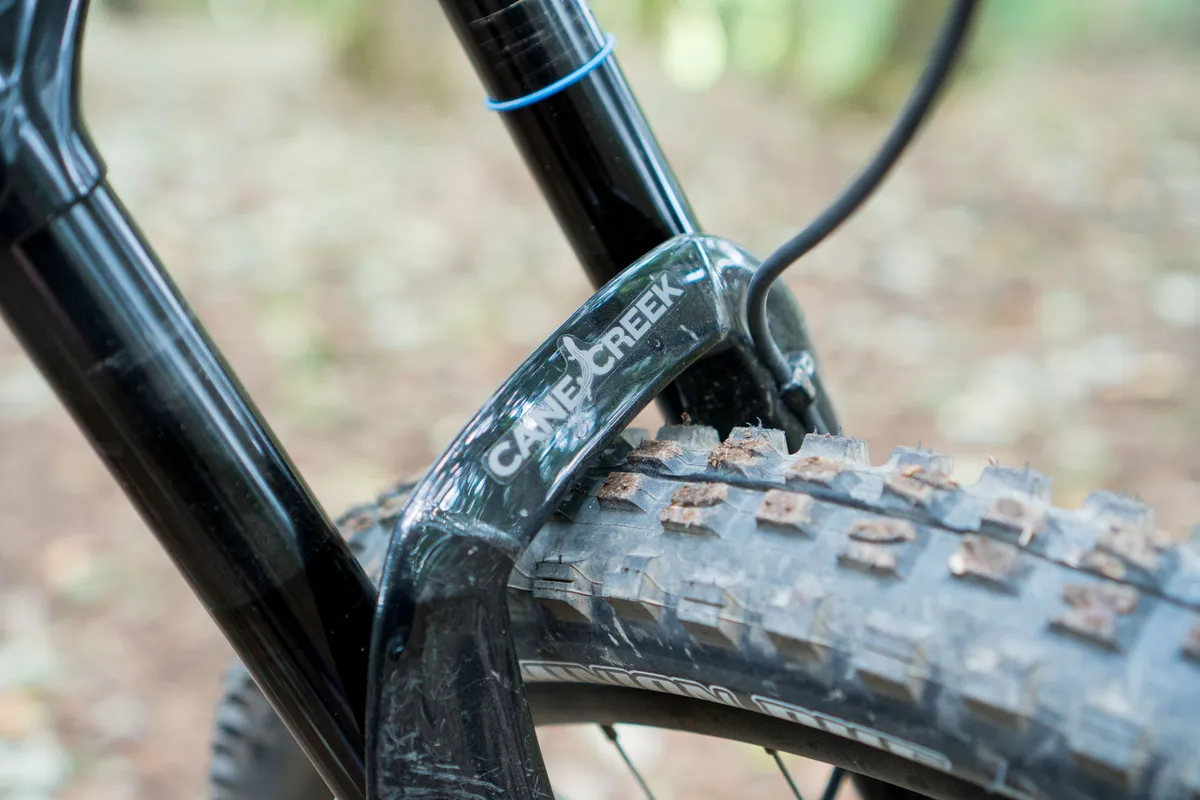
The Helm MKII uses 35mm stanchions, which are the same as RockShox’ Pike and Lyrik forks, but smaller than Fox’s 36mm upper tube 36 fork and 38mm upper 38 fork, and RockShox’ newest ZEB that uses 38mm tubes.
Cane Creek claims the maximum recommended tyre width for the 29in version is 64mm (2.5in).
This version of the Helm uses a coil spring, and there are four different spring weights available that should suit riders who weigh between 40kg and 108kg.
The fork is supplied with the green spring that’s suitable for riders who weigh between 72.5kg and 90kg. More springs are available to purchase for £36.99 / $42. Spring preload is externally adjustable, too.

If none of Cane Creek’s springs match your weight or riding style, or you’re looking to refine the fork’s ride-feel with smaller adjustments, Cane Creek says the fork is compatible with Öhlins RFX36 coil springs.
Öhlins offers seven spring rates for riders between 45kg and 100kg and they cost roughly £50 per spring.
The coil spring fork’s travel is adjustable in 10mm increments from 130mm up to 160mm. Cane Creek says the Helm’s travel can be adjusted using just a few common tools and requires no additional parts (such as spring shafts) because everything needed to make the adjustment is included in the box.
The fork’s dust wiper seals have been upgraded from the previous iteration to SKF low-friction versions.
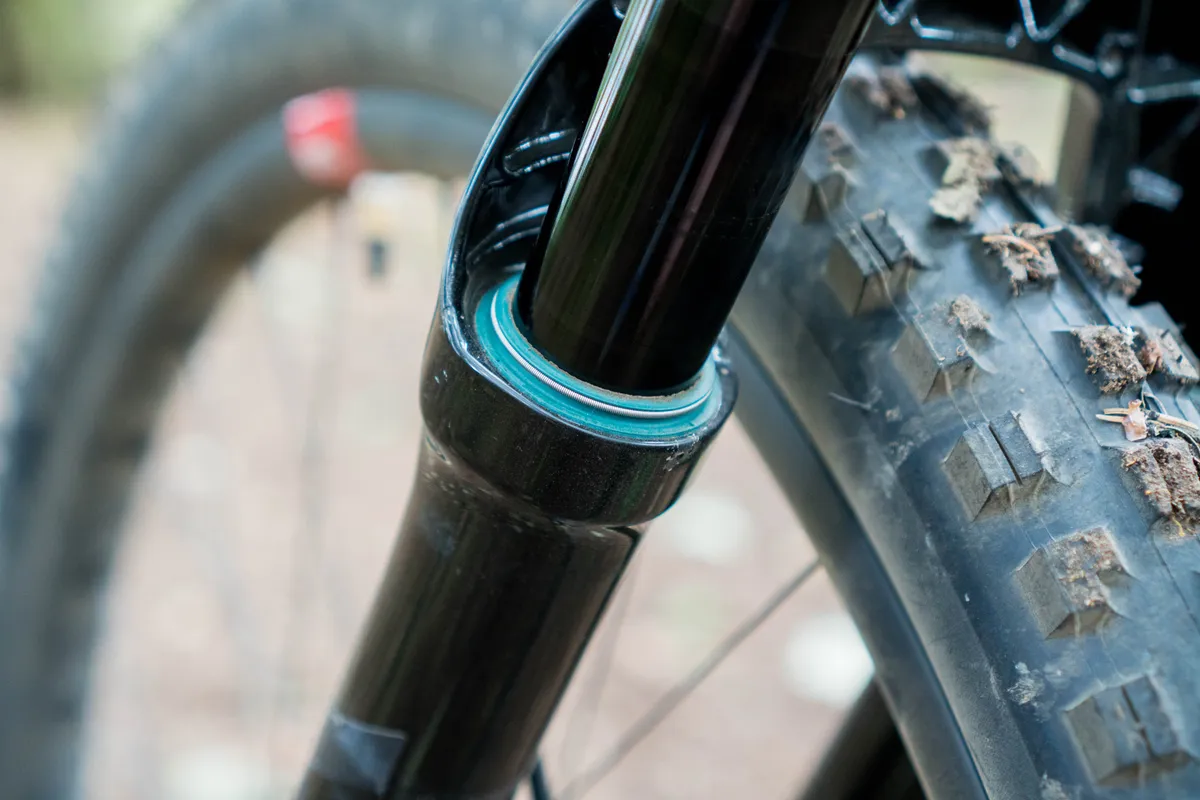
The damper has also received an overhaul getting new compression and mid-valve circuits – to improve support and control – while an SKF oil seal head and the use of 2.5 weight Motorex damper oil are claimed to reduce friction and create a supple ride.
There are externally adjustable high-speed and low-speed compression and low-speed rebound damping thanks to adjusters on the top and bottom of the right-hand fork leg.
15×110mm Boost axle spacing is standard and the forks are compatible with Cane Creek’s D-Loc thru-axle.
The 29in-wheeled Helm MKII is available in 51mm and 44mm offsets.
My test sample Cane Creek Helm MKII Coil 29 with a 44mm offset and 212mm steerer tube weighed 2,330g including the axle.
For comparison, a 170mm travel 29in RockShox Lyrik weighs 2,019g, while Fox’s 29in wheeled 170mm travel 36 is 2,087g and Fox’s 170mm travel 29in-wheeled 38 is 2,363g. Although all three of these forks are air-sprung rather than coil.
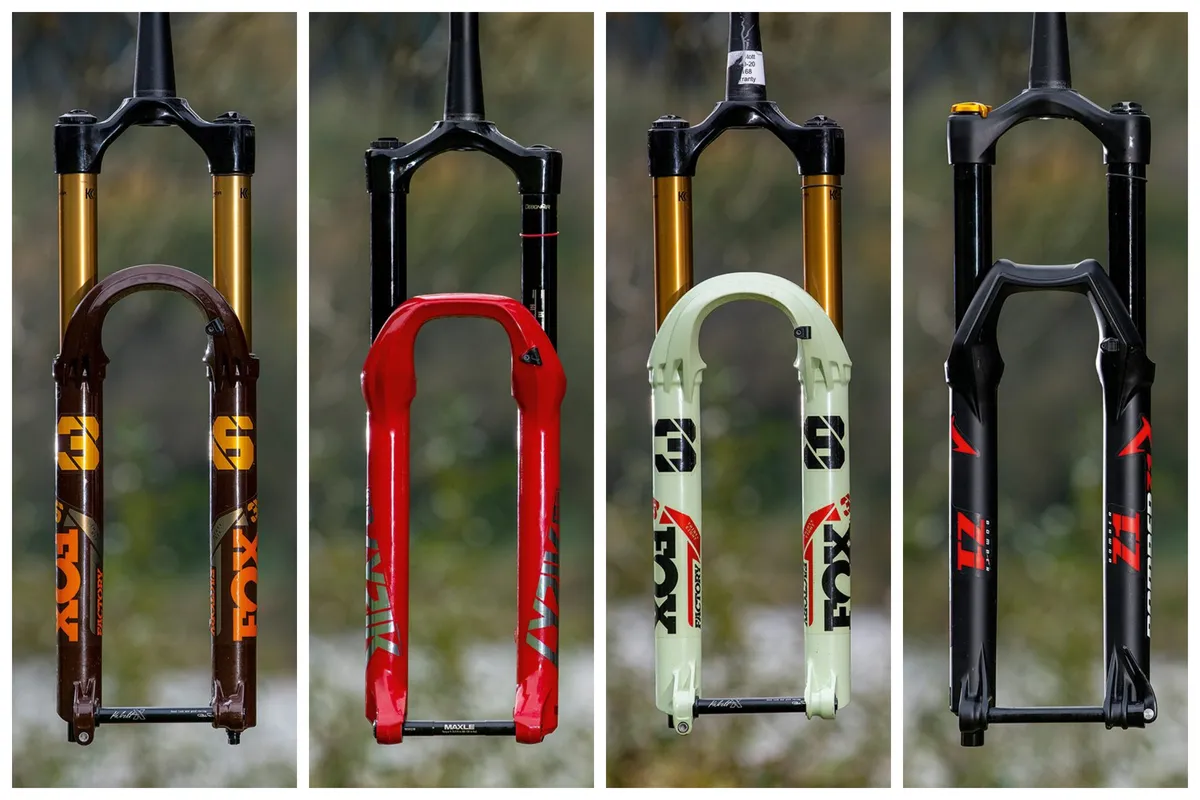
Marzocchi’s Z1, which also uses a coil spring but has 36mm stanchions, with 170mm of travel and built for 29in wheels weighs 2,525g.
That means the Helm is quite weighty for a 35mm stanchioned fork, but most of this is due to the coil spring – the air-sprung version of the Helm weighs roughly 2,081g.
Cane Creek Helm MKII Coil 29 set-up
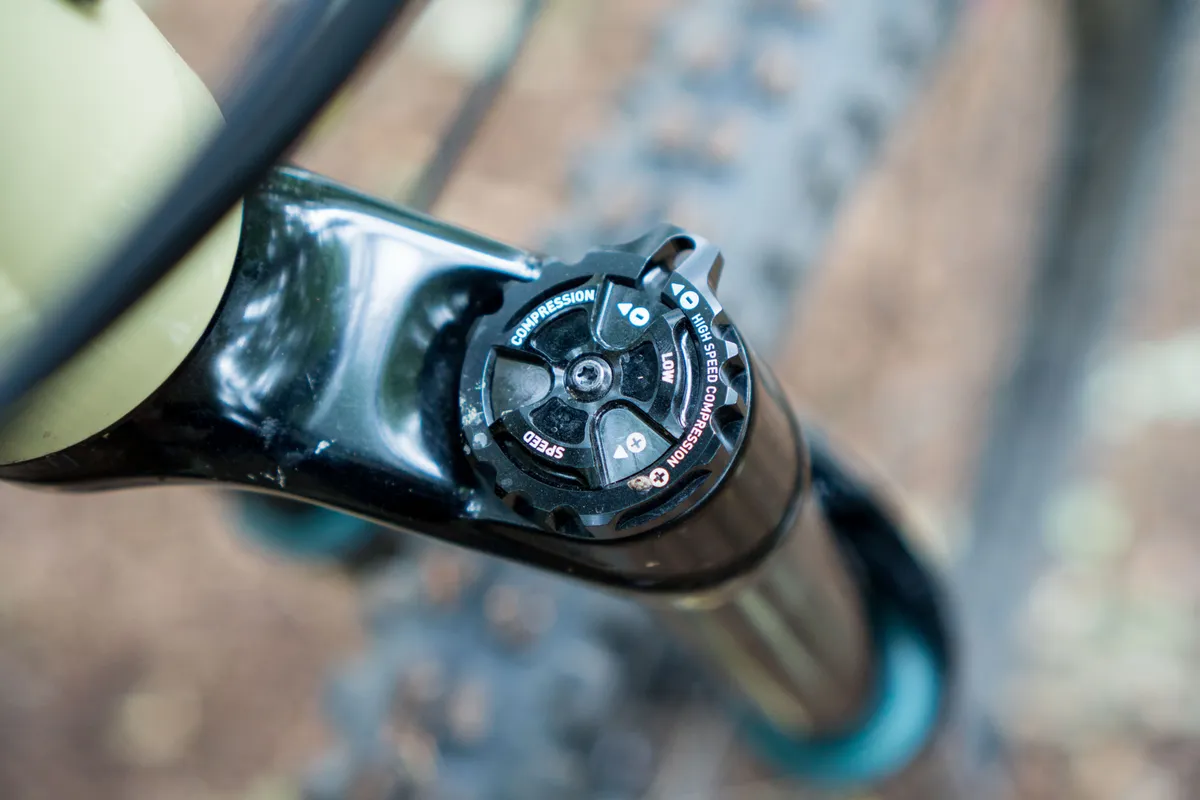
After trying out the stock green spring – that my 76kg kitted-up weight sits perfectly in the middle of its recommended weight range – I decided that it felt too soft, particularly through compressions and berms.
Before changing the spring, I increased the amount of low-speed compression damping in a bid to prop the fork up in its travel. I found I needed to increase it too much to create the desired amount of support I was after, though, and increasing it further ended up causing the fork to feel choked on fast, chattery bumps.
The other option I explored, and is recommended by Cane Creek, was to add preload to the spring before increasing compression damping too much.

Increasing spring preload is a viable option to reduce sag by increasing the fork’s initial stiffness. However, this doesn’t change the overall spring rate or make the fork harder deeper into its travel.
Because I didn’t think the fork was too soft at the start of its travel – in fact, I thoroughly appreciated its supple off-the-top feel – I was reluctant to increase preload because this compromised its suppleness without the increase in mid-stroke support I felt I needed.
I ended up installing the hardest available spring, designed for rider weights between 90kg and 108kg, with the low- and high-speed compression damping set to fully open.
This left me to set the rebound. With the blue spring installed I ended up with three clicks of 10 of rebound from fully open. This made the fork recover quick enough after large hits and gave it the smoothest, flutteriest feel on the small bumps.
Cane Creek Helm MKII Coil 29 ride impressions
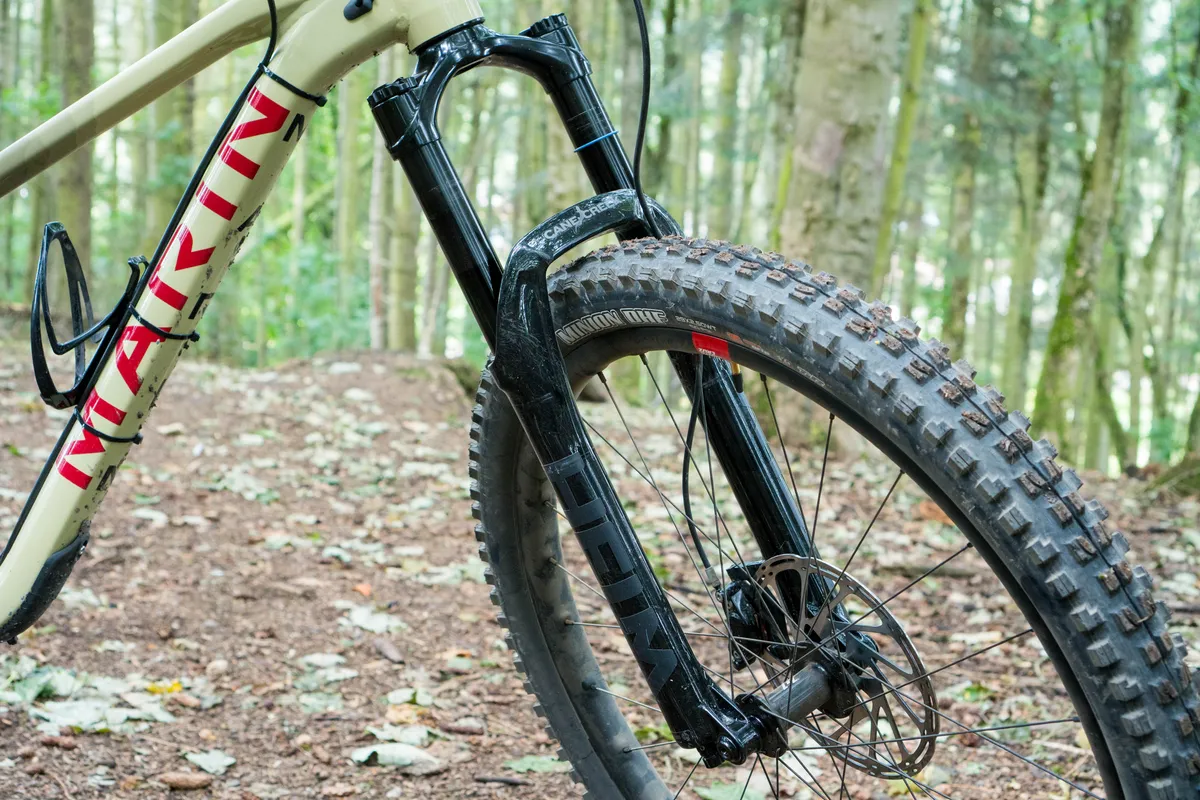
The Helm MKII’s suppleness was its standout feature. Over small bump trail chatter, it was remarkably impressive, smoothly and competently insulating my hands from roughness and harshness.
This was most apparent on graded trail centre style tracks with worn, bumpy surfaces or chunky, rocky chunder where comfort and grip can be seriously diminished by an under-performing fork. The Helm did a great job of improving control across loose rocks, too.
Arguably, the Helm is marginally more supple on trail chatter than the latest MY21 RockShox Lyrik with updated DebonAir air spring, but is virtually identical to Fox’s GRIP and GRIP2 damped 34, 36 and 38 forks.
Of course, its performance wasn’t limited to those scenarios. it also did a great job of smoothing over rough, embedded rocks and roots, reducing upward and sideways deflection because it was able to absorb and dampen the bumps enough to reduce those forces transmitting into the bar and my hands.
This meant steering control, grip and speed all felt like they increased.
But it was when I was riding faster, harder, steeper and gnarlier terrain that the Helm MKII really shone. It didn’t feel like it had any perceptible dive in turns or through compressions, providing excellent levels of mid-stroke support and bottom-out resistance.
This helped maintain the bike’s dynamic geometry and provide control because the front end wasn’t getting overloaded. This mid-stroke support made it easy to ride hard with plenty of commitment, confident in that the fork wasn’t going to unexpectedly bottom-out or plough through its travel.
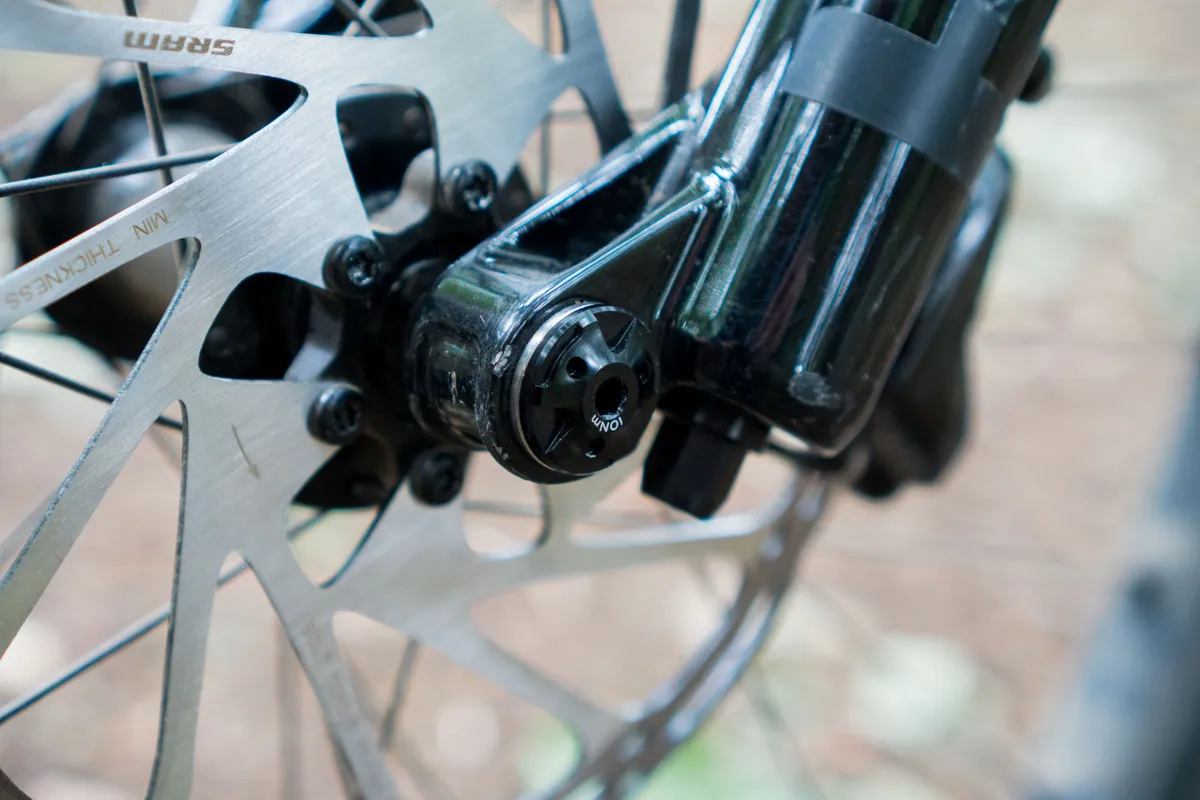
The bottom-out resistance proved to be invaluable when hitting steep, sharp turns where the majority of my weight was over the front wheel. Resistance deep into the travel meant I could corner harder and faster than when riding a fork that blew through its travel.
Despite the coil spring being linear in nature compared to air springs which are progressive, the fork’s ending-stroke ramp up was well-tuned. Having this level of deep-stroke support without needing to add tokens or the coil spring equivalent (this can sometimes be an elastomer) – like you’d need to on an air fork – is impressive.
Its damper and spring performance is mirrored by its chassis stiffness. In those same sharper and steeper turns with plenty of front wheel loading the fork didn’t feel overwhelmed and resisted flex and twisting well. This further increased steering accuracy and confidence allowing me to ride faster and harder still.
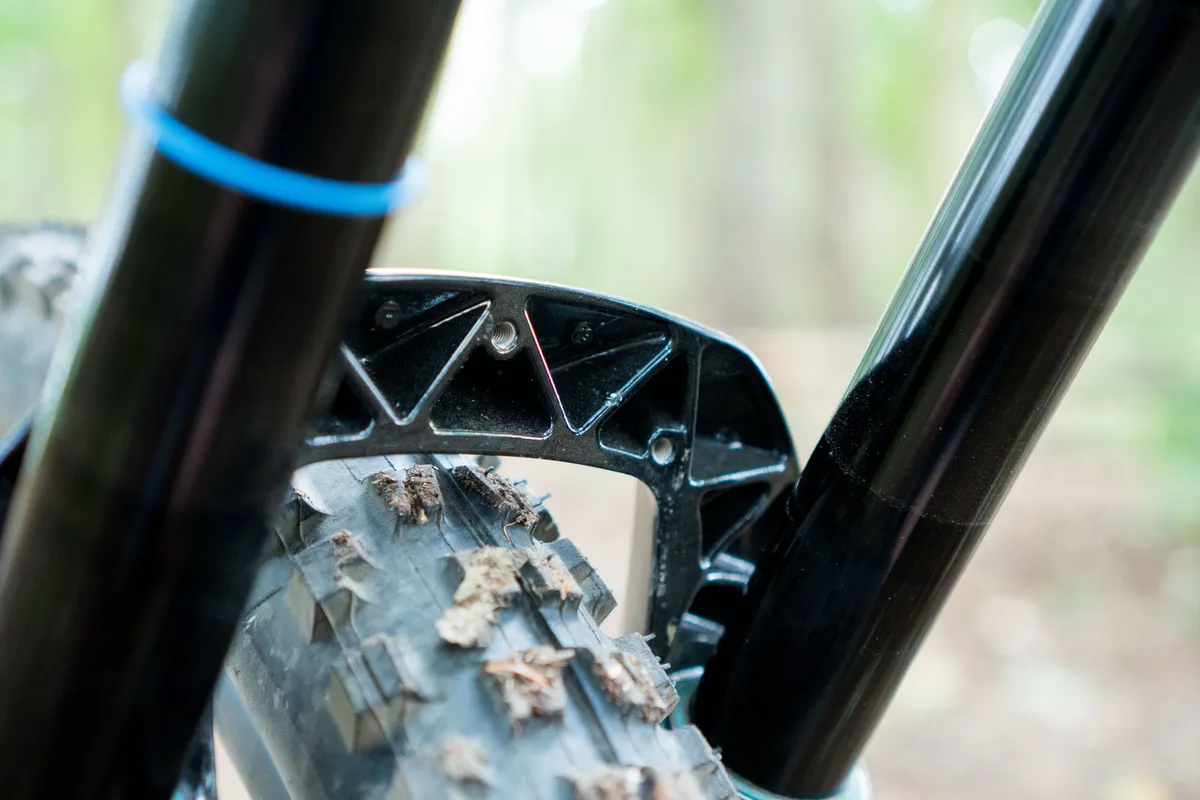
The Helm’s chassis isn’t overly stiff, though. This meant it didn’t transmit any harshness into my hands through the bar and neither did it get easily deflected off-line by large angular bumps, such as rocks or roots.
It also performed well on off cambers, once again allowing me to hold lines confidently and not causing any terrain-based deflection.
Compared to the RockShox Lyrik and Fox 36, the Helm isn’t noticeably different in terms of stiffness but is marginally less rigid than RockShox’ ZEB or Fox’s 38.
Cane Creek states the arch’s tyre clearance is limited to a 64mm wide tyre that’s 749mm tall. In real-life terms that’s a 29×2.51in tyre.
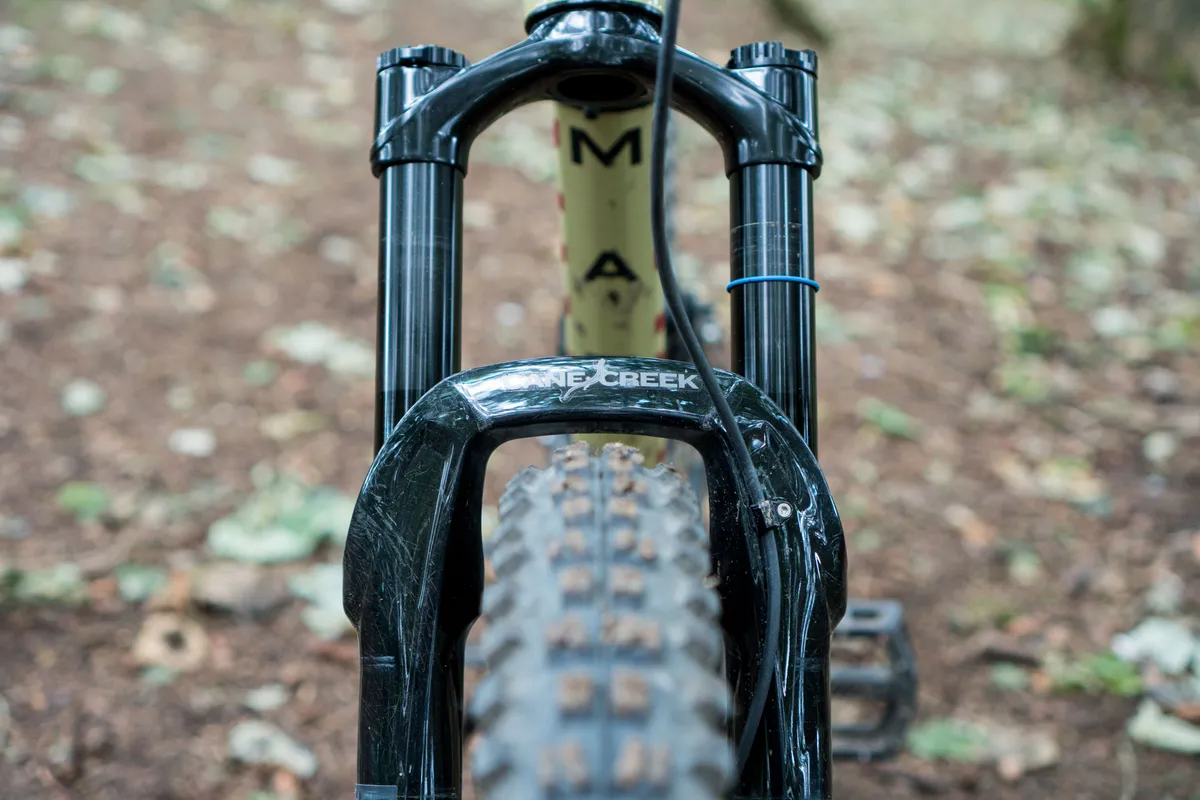
Although a Maxxis Minion DHF 2.5×29in WT tyre does fit, it’s very tight and there’s limited space for a mudguard and mud clearance.
Clearance on the Helm is less than the Lyrik and Fox 36 and 38 forks, so if you like wider tyres, make sure your setup will fit.
Cane Creek Helm MKII Coil 29 limitations
Thanks to the coil spring’s limited range of four different spring rates, you might be unable to find one that suits your riding style or weight. As I mentioned previously, Cane Creek says the Helm is compatible with Öhlins RFX36 springs, which have a wider range of rates.
Another problem is that if you’re a heavy or hard rider, you might exceed the heaviest coil spring’s capabilities. If you fit into this category, I would recommend considering the air-sprung version of the Helm that has a larger range of adjustment.
Another potential issue for riders of different weights or styles could be to do with the compression and rebound damping.
I think the Helm is heavily damped and the damping on offer goes from fairly firm in its open setting to very firm in its closed setting, making it reasonably limited in its real-world usefulness.
I ended up with the compression adjusters set to fully open and the rebound adjuster almost fully open, even when running the stiffest spring.

I could have gone down a spring rate and run more compression damping, but I thought this felt like the fork was beginning to choke on the successive, sharp and quick hits it excelled on with the damping set to open.
Because the rebound damping adjustment was already almost totally open, a lighter rider with a lighter spring might struggle to get the fork to return fast enough.
Of course, I can’t test this theory (unless I go on a crash diet) but it is certainly something to consider. It’s also a problem shared widely across manufacturers. I usually run the damping on Fox’s GRIP and GRIP2 cartridges fully open, and the same can be said for its rear shocks.
RockShox rear shocks also frequently require the compression and rebound damping to be fully open, while the Charger RC 2.1 damper performs best with no high-speed compression adjustment dialled in and very limited low-speed compression adjustment, although the rebound damping appears to have a wider range of usable external adjustment.
Cane Creek Helm MKII Coil 29 bottom line
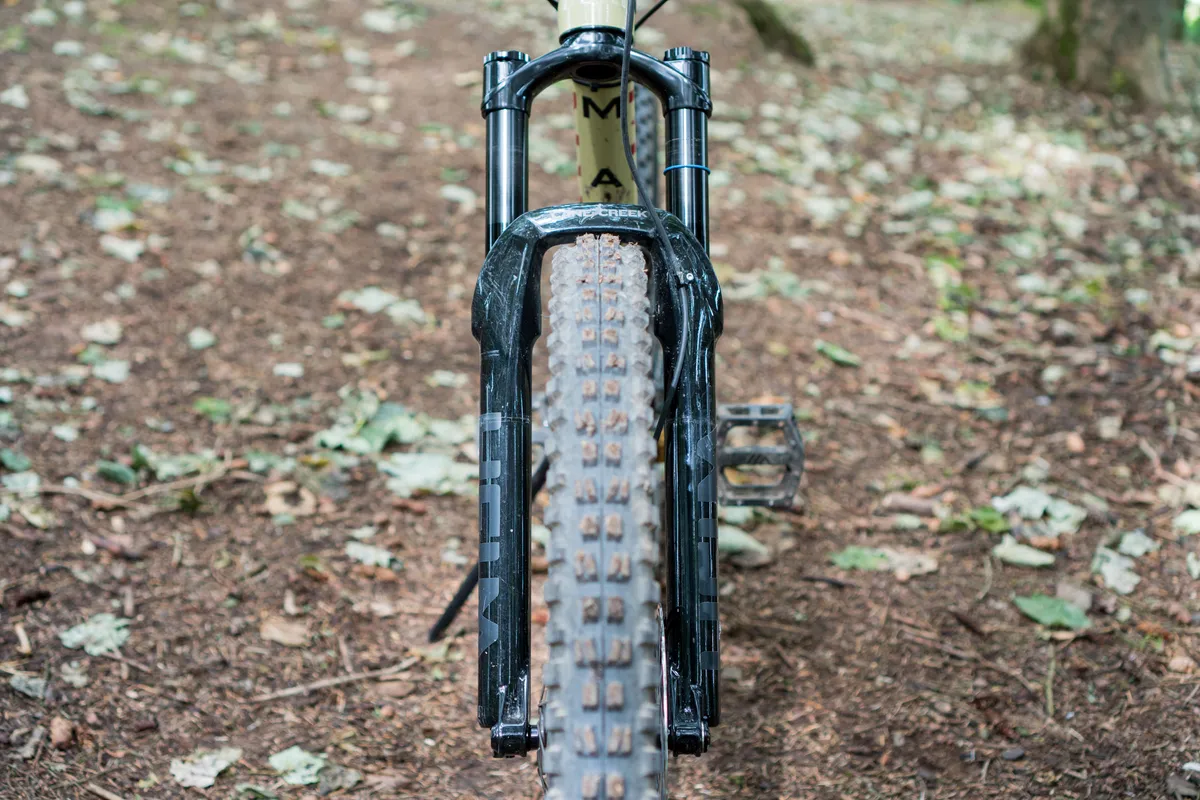
The Helm MKII Coil is a brilliant performer, especially on rougher, gnarlier trails. It begs you to ride harder and faster and its chassis stiffness, mid-stroke support and bottom-out resistance match that sort of riding style.
If you get along with the limited stock springs or don’t mind buying an Öhlins spring to plug the gaps in Cane Creek’s lineup, then it is on par with the big-hitting Lyrik and 36 in terms of performance, offering a cracking but slightly more boutique alternative.
Product
| Brand | cane_creek |
| Price | 1049.99 GBP,1049.99 USD |
| br_whatWeTested | Crane Creek Helm MKII Coil 29, 160mm travel, 29in chassis, 44mm offset |
| Weight | 2330.0000, GRAM (160mm travel, 29in wheel, 44mm offset) - 160mm travel, 29in chassis, 44mm offset, 212mm steerer tube |
Features
| br_spring | coil |
| br_lockout | no |
| br_wheelSize | 29in_700c |
| br_axle | 15x110mm Boost D-Loc axle |
| br_damperAdjust | High- and low-speed compression adjustment. Low-speed rebound adjustment. Spring preload adjustment.. |
| br_offset | 44.0000 |
| br_offset | MILLIMETER |
| br_travel | 160.0000 |
| br_travel | MILLIMETER |
| br_stanchionDiameter | 35.0000 |
| br_stanchionDiameter | MILLIMETER |
| Features | High- and low-speed compression adjustment. Low-speed rebound adjustment. Spring preload adjustment. Travel adjust from 130-160mm in 10mm increments. |
